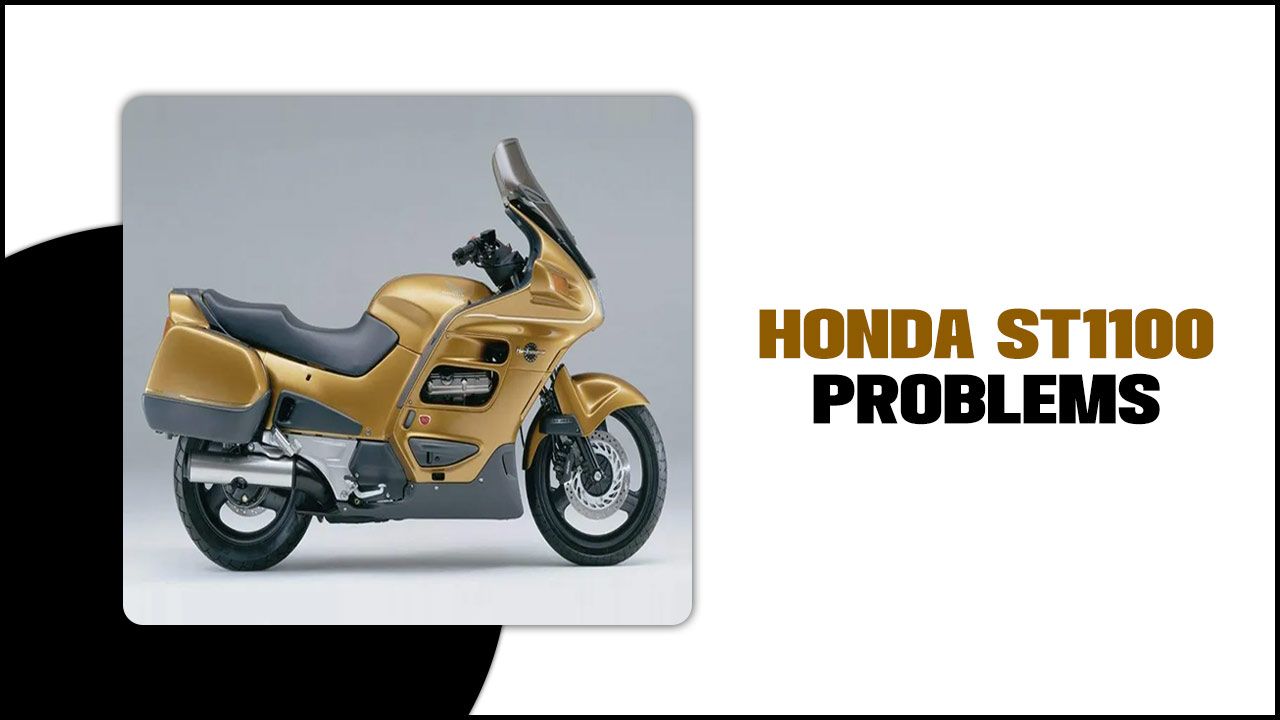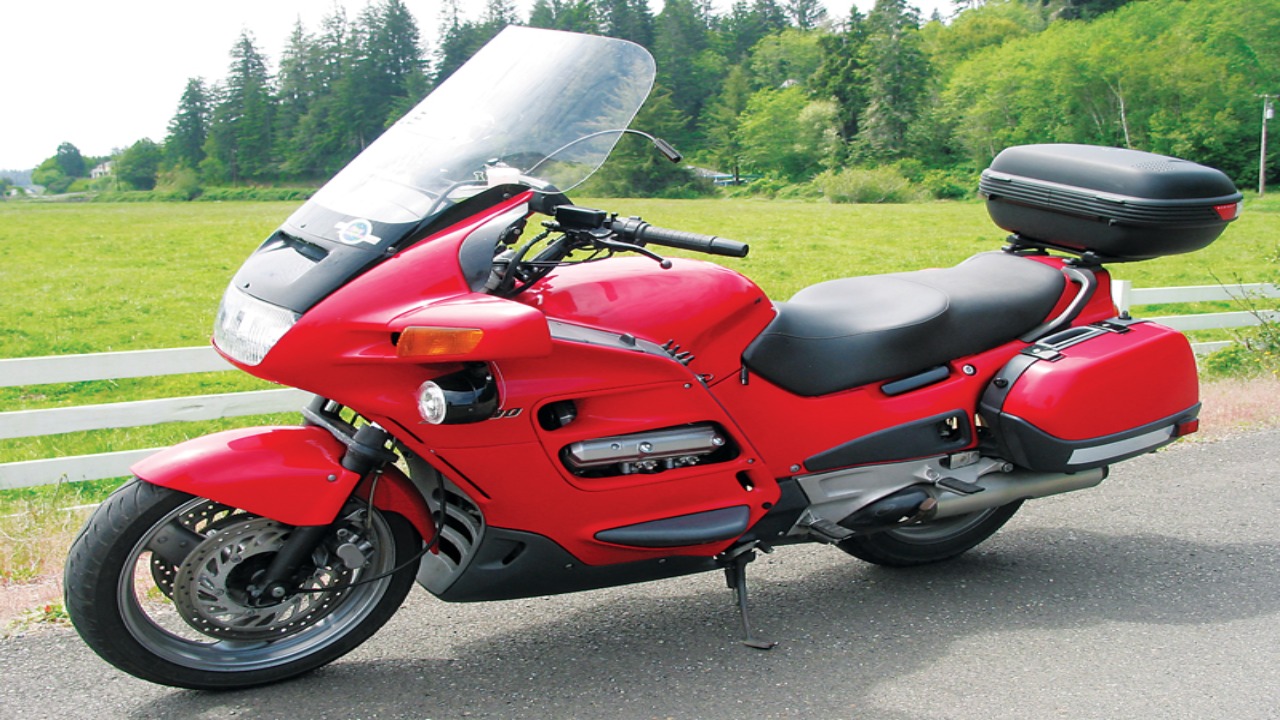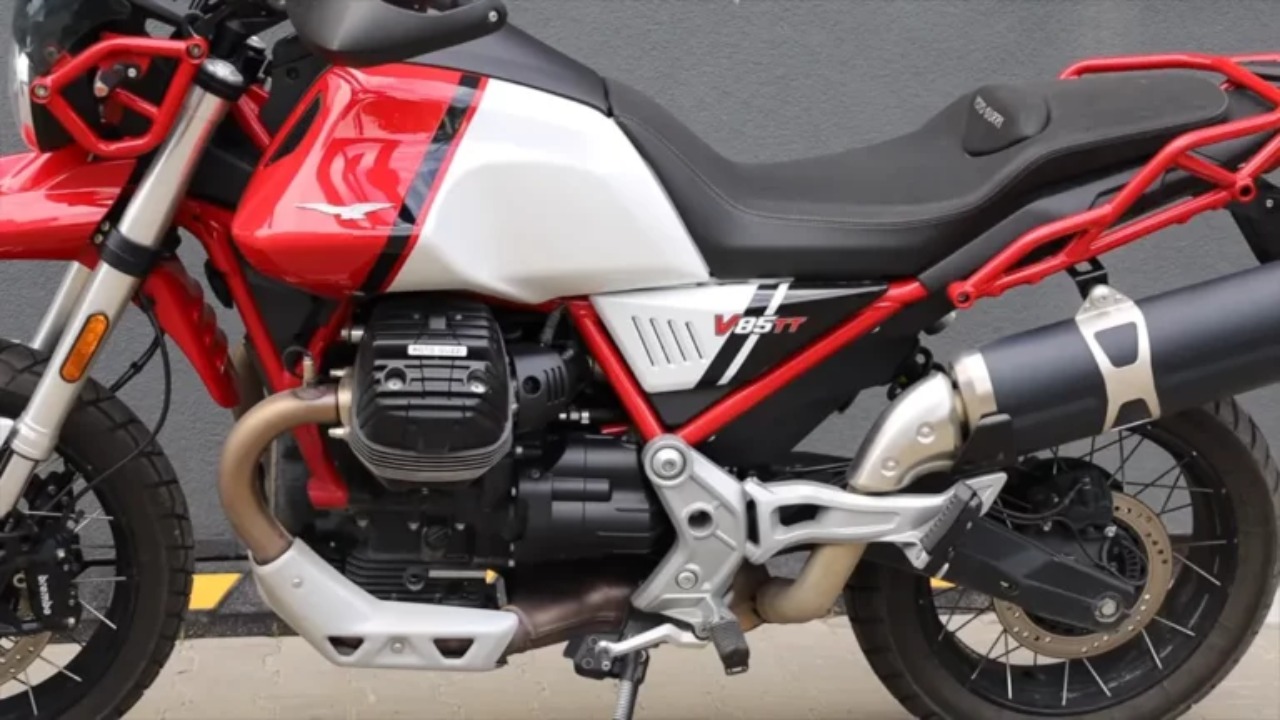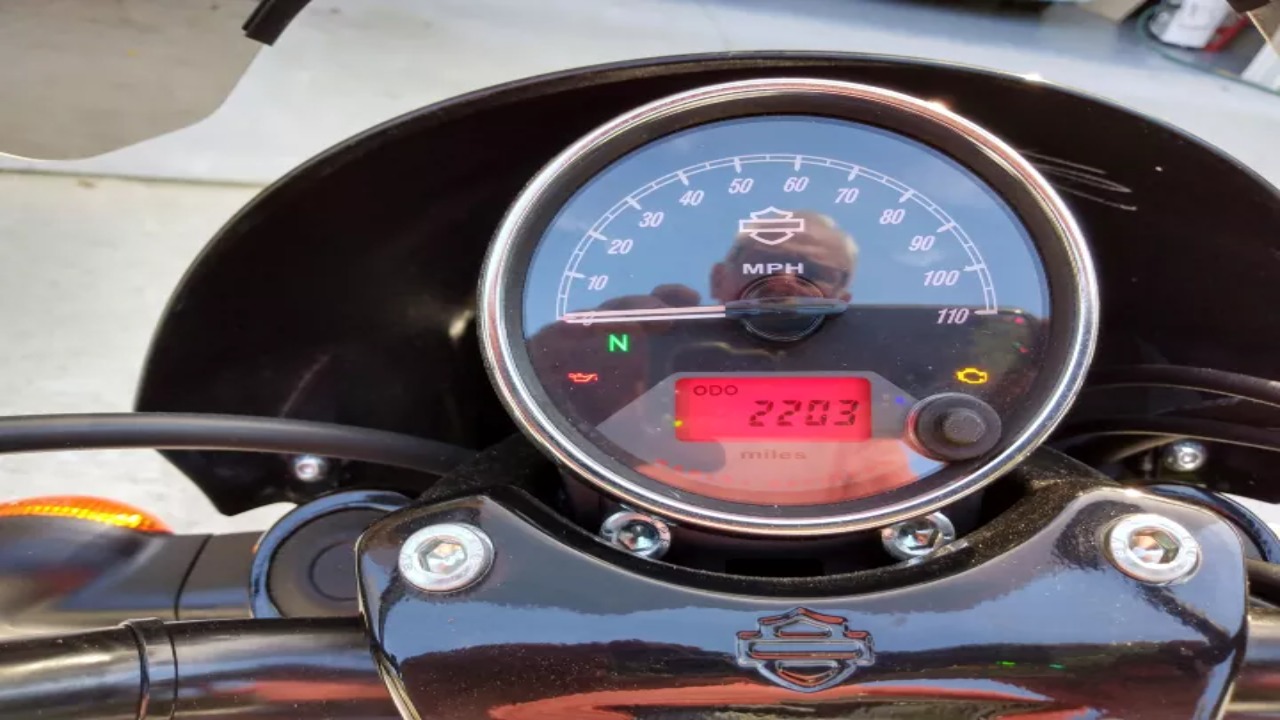The Honda ST1100 Motorbike is one of the most popular motorbikes among bike lovers. People worldwide know it for its comfort, style, and performance.
Likewise, the bike was first introduced in 1985. Since then, it has been one of the motorbikes that Honda sells. The bike has a four-stroke, liquid-cooled, 1084cc DOHC engine with a 30-35 km/l mileage. This motorbike can reach a top speed of around 210 km/h. Despite the great speed, you will see a few Honda ST1100 problems.
If you own a Honda ST1100, you may be familiar with some of the common problems that can occur. But those who want to own it may not be familiar with these issues. Here, We’ll look at some of the most common Honda ST1100 problems. You will also learn about what to do to fix them.

An Overview Of The Honda ST1100

The Honda ST1100 is a legendary touring motorcycle that has captured the hearts of riders worldwide. With its powerful engine, comfortable bike seating, and sleek design, it is no wonder that the ST1100 has become a favorite among long-distance riders. Here are some tables:
|
Specification |
Description |
|
Engine |
1,085cc V4 |
|
Power |
100 hp |
|
Torque |
86 lb-ft |
|
Transmission |
5-speed |
|
Fuel Capacity |
7.4 gallons |
|
Weight |
703 lbs |
|
Seat Height |
31.5 inches |
|
Suspension |
Front: Telescopic fork, Rear: Single-sided swingarm |
|
Brakes |
Front: Dual disc, Rear: Single disc |
|
Top Speed |
130 mph |
|
Fuel Efficiency |
40-45 mpg |
|
Colors Available |
Black, Red |
|
Price |
Starting at $5,000 |
List Of Honda ST1100 Problems

The Honda ST1100 problems include low mileage, starter relay failure, and defective sensors on the bank angle. Due to poor material, you will also see problems with its corrosion on the exhaust system and swingarm.
Some of these Honda ST1000 electrical issues are minors and can be fixed at home. Other problems, such as defective bank angle for the mirror, are not fixable. Honda called off all their ST11000 motorcycles with this problem.
|
Defective bank angle sensor |
Some early models (1991-1993) had this issue |
Replacement of sensor |
|
Starter relay failure |
The bike won’t start |
Solenoid replacement |
|
Exhaust corrosion |
Leakage in the pipe causes power reduction |
Installing stainless steel exhaust pipe |
|
Swingarm corrosion |
Rear swing arm rusts |
Swingarm replacement |
|
Faulty brake system |
Exposed brakes seizure fast |
Requires calliper removal |
|
Worn steering head bearings |
Steering head bearings are worn out over time |
Replacement needed |
|
Low mileage |
Excessive fuel consumption |
Repair the engine |
Problem 1: Defective Bank Angle Sensor

Most early models (1991-1993) have had this problem. Usually, a bank angle sensor works to shut off the engine and fuel water pump when you overturn or fall the bike. However, a faulty sensor can stop the engine from working when riding on a bumpy surface or making abrupt turns.
Honda recalled the models mentioned earlier. As a result, the following ABS unit model had no major bank angle sensor problem. Thus, you can contact the dealer for a free sensor repair and replacement. The defective Bank Angle Sensor caused issues with the tires, forks, cam belt, and cartridge fork.
Problem 2: Starter Relay Failure
A common issue of ST1100 is the failure of the starter relay. Somehow, the starter solenoid faces a short circuit and gets melted. As a result, the wires loosen, and the bike may fail to start. It may happen when the rider takes the bike in the rain.
The starter relay problem happens mainly because of a short circuit. Thus, you need to eliminate the main root of this short circuit and help the device work properly.
- You can remove the wires from the plastic clip and solder them onto the spade connectors.
- Then, you must install an inline fuse holder that houses a 30A fuse. The motorbike will work again.
- It can be a short-term solution. You may need to call the dealer to replace the solenoid for a better, long-lasting solution.
Problem 3: Exhaust Corrosion
In many models of ST1100 Honda, the exhaust tends to erode over time. You may inspect the bike underneath the collector box and points. Hence, a corroded exhaust pipe can cause exhaust leakage, leading the bike to experience a power reduction, less acceleration, and reduced mileage. Installed heated grips, checked the hydraulic clutch, and replaced the spark plug to prevent exhaust corrosion.
You need to replace the exhaust pipe with a new and better one. We suggest you pick stainless steel exhaust for a sturdy solution. Many 2-in-1 exhaust systems with a stylish look deliver excellent performance. Remember that a good exhaust pipe will enhance your motorbike’s fuel efficiency and performance.
Problem 4: Swingarm Corrosion
A swingarm is usually a single-sided or double-sided automated device. It can connect the rear wheel to the rest of the body while allowing it to pivot vertically in the bike. Unfortunately, many Honda ST1100 bike owners have reported that their swingarms rusted after running a specific time.
Especially if you ride the bike on a salty road in the winter, upon inspection, you may need to remove the costly old rear wheel. However, removing the swing arm and the linkage bearing at home is possible. The steps include:
- Apply penetrating fluid on all the bearings, bolts, nuts, and the swingarm the night before working with them.
- First, work with the rear wheel. Disconnecting the rear tire brake lever, chain guard, and hugger hose clip would be best.
- You can then work to remove the shock absorber. Is it possible to work with the exhaust system of ST1100? Then, you may access the linkage to unbolt and remove it.
- After that, grease the linkage bearings to remove residues from them. Then, you may disconnect the swingarm from the motorcycle. It would help if you also greased its bearings for quick removal.
- Finally, you can pry off the old and damaged wheel bearings sets to install the new ones.
Problem 5: Faulty Brake System

The brake pistons of the ST1100 motorcycle lie down in an exposed position. Eventually, this part becomes subject to seizure. It can lead to a severe accident or compromise the rider’s safety. You may find it pathetic to be on a good speed but fail to control the brakes.
You need to bleed the system first. Then, disassemble the caliper pistons. To quickly remove the Air fuel filter from the system, drain some fluid by taking the plate off the master cylinder. Alternatively, reverse bleeding is a great idea to thoroughly coolant flush and bleed (or replace fluid) the system. You can contact the dealer to fix the issue if flushing is difficult.
Problem 6: Worn Steering Head Bearings
Another major problem of the Honda ST1100 is the worn-out steering head bearings. The rider may often find the bike difficult to steer at lower speeds and straight lines. Then, you may need to control steering more strictly and find it difficult to manage well.
Call the dealer to inspect and repair the steering head bearings. Usually, a replacement is needed to solve the issue correctly. Otherwise, claim your warranty to get a free replacement. Aftermarket exhausts can enhance the performance of a motorcycle by reducing its wet weight and minimizing air bubbles in the fuel system, resulting in improved handling even with worn steering head bearings.
Problem 7: Low Mileage

Some Honda ST1100 riders have discovered that their bikes consume more fuel than usual. The average mileage of this bike is 30-35 km/l. But it may somehow get reduced to 20-25 km/l over time. When your bike points to low mileage, you may need to pour more fuel into the tank. It is both financial and time-loss, especially if you need to go on a long ride.
You should contact the bike dealer and ask them to inspect the engine for any faults. Otherwise, a compatible and accepted engine replacement will solve the problem.
Conclusion
While the Shovelhead engine has its merits, there are also some disadvantages. One of the main drawbacks is its reputation for being less reliable and more prone to mechanical issues than other Harley-Davidson engines. The Shovelhead’s design, with its separate rocker boxes and pushrod tubes, can lead to oil leaks and gasket failures.
Additionally, the Shovelhead engine requires more maintenance and frequent adjustments due to its design and older technology. Finding replacement parts for the Shovelhead can be more challenging than finding newer engines, resulting in higher repair costs. Despite these disadvantages, many enthusiasts still appreciate the vintage charm and unique sound of the Shovelhead engine. We’ve discussed Honda ST1100 Problems.
FAQ
Is The Honda St1100 Reliable?
Yes, the Honda ST1100 is generally considered to be a reliable motorcycle. It has a reputation for reliability for being well-built and durable, with many riders reporting high mileage without significant mechanical issues.
What Is The Fuel Range Of The St1100?
The fuel range of the ST1100 motorcycle is impressive, allowing riders to go the distance without worrying about running out of fuel. With its large fuel tank capacity and efficient fuel consumption, the ST1100 can travel up to 300 miles on a single gas tank.
What Is The Most Common Problem With Honda?
The most common problem with Honda vehicles is typically related to transmission issues, particularly with certain models such as the Honda Accord and Civic. These problems can range from transmission slipping, harsh shifting, or complete transmission failure.
Is Honda Bike Engine Good?
Yes, Honda bike engines are considered to be good. Honda motorcycles are known for their reliability, performance, and durability. They are often praised for their smooth power delivery, fuel efficiency, and low maintenance needs.
How Long Do Honda Motorcycles Last?
Honda motorcycles are known for their durability and reliability. With proper routine maintenance and care, they can easily last for decades. Many Honda owners report their motorcycles lasting over 100,000 miles before needing major repairs.
